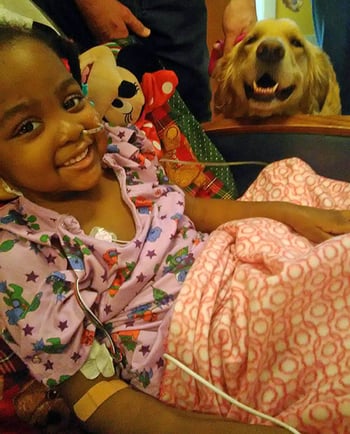
ABC’s World News Tonight: "Why a man donated part of his liver to a little girl he’d never met"
In my 27 years of medical practice, I have seen countless children receive the gift of a life-saving organ donation, but a few months ago I was honored to be part of a truly remarkable event.
For the first time since the inception of Children’s Wisconsin and Froedtert & the Medical College of Wisconsin Joint Transplantation Program, a child received a liver from an altruistic live donor.
I was delighted to see that this significant event was shared on ABC’s “World News Tonight with David Muir.”
A first of its kind procedure
Altruistic live donors are people who, out of the kindness of their hearts, voluntarily donate an organ or a portion of their organ to a person they don’t even know.
It is not entirely uncommon for someone to donate a kidney to a stranger. For instance, one of our own nurses here at Children’s Wisconsin donated a kidney to a 5-year-old girl in 2017.
Donating a liver, however, is a much more intense process. The surgery is more complex, it carries more risk, and it involves a much longer recovery time.
Besides being the first altruistic live donor liver transplant at Children’s Wisconsin, this is the first time in the state — and possibly the Midwest — that this has been done.
In fact, out of approximately 35,000 liver transplants performed nationwide over the last five years, only about 20 of them have been from altruistic live donors.
Here at Children’s Wisconsin, we have performed 156 liver transplants since 1988. In 1999, we performed the state’s first pediatric live donor transplant. Our live donor liver transplantation program was re-established and received certification from the United Network for Organ Sharing in 2013. To date, we have performed a total of nine live donor liver transplants — all from relatives. We had never done a live liver transplant from an altruistic donor, until now.
A selfless man and a lucky little girl

A generous man named Kristian initially tried to become a liver donor for his friend’s son last year. That child ended up receiving a liver from a deceased donor, but Kristian felt so compelled to continue his journey that he chose to donate to a little girl he didn’t even know: 4-year-old Zanyah who suffered from a life-threatening congenital liver disease.
Kristian’s decision changed Zanyah’s life, but I’m hopeful that his example will encourage others to help change the lives of so many other children waiting not just for liver transplants but all kinds of transplants.
Currently, there are 13 patients at Children’s Wisconsin waiting for liver transplants, six on the heart transplant list, and one on the kidney transplant list. Among these patients, two are in need of combined liver-heart transplants.
The expertise and talent that makes for changed lives
While Kristian’s selfless decision made a new liver possible for Zanyah, I also want to recognize our outstanding multidisciplinary liver transplantation team at Children’s Wisconsin and Froedtert & the Medical College of Wisconsin. We have the talent and expertise to perform life-saving transplants and to care for kids and their families every step of the way.
Moreover, the strong collaboration between these three institutions makes it possible to perform transplants between adult donors and child recipients, enabling us to offer families every opportunity for a second chance at life.
In addition to being one of the first transplant centers in the nation to perform an altruistic live donor liver transplantation, Children’s Wisconsin also completed the state’s first pediatric combined liver-heart transplant and the first pediatric in situ split liver transplant.
At our Transplant Center, we believe that liver grafts from altruistic live donors provide an important addition to the scarce organs for transplantation. As such, we have developed a strong organizational structure to preserve the interest and well-being of the live donor in a manner that is independent of the transplant recipient.
Our Transplant Center’s rigorous live donor evaluation and informed consent process ensures that the live donor is competent, willing to donate, free of coercion, medically and psychosocially suitable, and fully informed of the risks and benefits as an organ donor, as well as alternative treatments available to the transplant recipient. We are committed to achieve the most successful outcomes for both the live donor and the recipient.
Children's Wisconsin Resources

Written by
Johnny Hong
, MD
Director
Related Stories
No related articles found.



